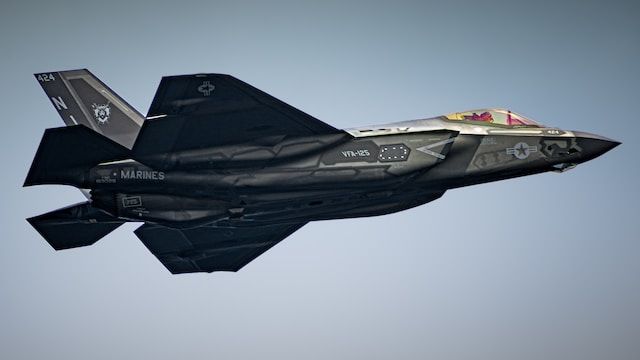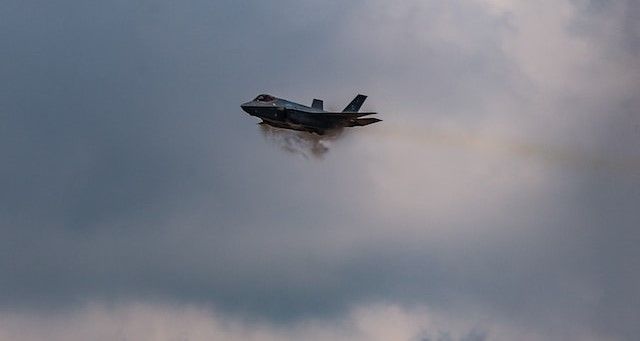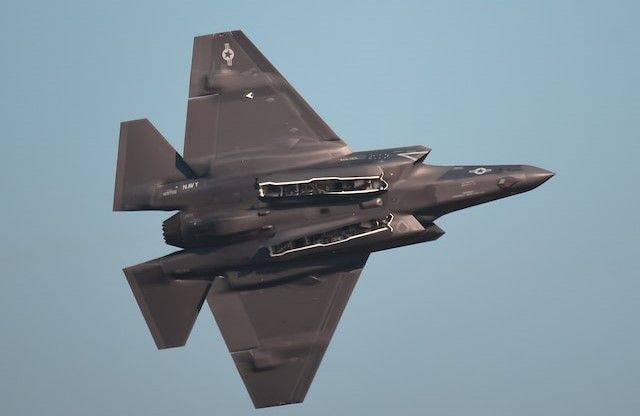Supply Chain Issues Slow F-35 Production
Even the US military is helpless to the power of supply chain management.

The gravitational pull at the centre of a black hole, Russia’s Tsar nuclear bomb, and the economics of supply and demand, are some of the most powerful forces in the universe. That list must now include the power of supply chain management, as the mighty US military is facing shortages due to a lack of parts and raw materials.
Specifically, less than half of the updated F-35 Joint Strike Fighters that defence contractor Lockheed Martin pledged to complete this year have been built, while several new aircraft are being delayed by the poor production of critical parts.

As the industry journal Defense News reports, “Lockheed Martin is under contract to deliver 52 jets enabled with improvements known as Technology Refresh 3 by the end of this year. The company has finished construction on 21 of those.”
The news is based on statements made by Lt. Gen. Michael Schmidt, the F-35′s program executive officer to a House Armed Services tactical air and land forces subcommittee hearing.
Annoyingly for Lockheed, the nearly completed planes are sitting in the factory in Fort Worth, Texas, awaiting a handful of key components needed for upgrades to the TR-3 hardware. The delay of these small, although unspecified parts, has been enough to keep the planes on the ground and give stark evidence of the importance of supply chains.
“The hardware is good,” explained Schmidt. “It’s the rate at which they’re producing them to meet our production and retrofit needs. It is literally a small number of components, but I need all the components.”

The TR-3 upgrades are for hardware and software improvements which will give the F-35 better displays, computer memory, and processing power. They are also required for a future upgrade which will supply the planes with improved target recognition, weapon capacity, and electronic warfare capabilities.
The original deadline of April 2023 has now been shifted to mid-spring 2024, although Schmidt was not confident even that date could be met, with Lockheed warning that a delivery date of late June might be more realistic.
While the F-35 is the most advanced plane ever built, the inability of the US military industrial complex to provide sufficient parts and materials for their manufacture shows the significance of decent supply chains. As subcommittee chair Rep. Rob Wittman noted at the hearing the F-35 is a ‘technological marvel’ but the repeated delays in putting them into the sky was disturbing and showed an underlying weakness.
Although the problem is primarily one for US commanders, it was noted that Lockheed “is paying a significant price” for its inability to meet its contractual requirements.
“Lockheed is very much incentivized to deliver,” Schmidt told reporters, without specifying exactly how much those penalties were.

The delays are currently impacting only the delivery of new jets as the retrofitting to planes already in service has yet to begin. However, there are fears in industry circles that the hiccup in the supply chain could cause a logjam across the plane’s entire supply chain.
“They’ve got a little time here to ramp up, but they need to do it quickly,” Schmidt said. “It’s not good to get to a certain point in the production line where this part needs to go into that part, and that part’s not there.”
The problem of a shortage of parts for the F-35 is not a stand-alone issue, as supply chain challenges still remain for manufacturers of military hardware more than three years after COVID lockdowns ended.
Jason Miller, an associate professor of logistics at Michigan State University's business school noted in a recent Reuters report, “For sectors where demand is still strong, we are still seeing issues of materials shortages, and these problems will take additional time to resolve.” Adding that, “One of the big issues that we're trying to ramp up the military industrial base is having enough electronic components.”

Solving the supply chain issue for military suppliers is a highly convoluted task.
“The military supply chain is a complex system comprised of a network of suppliers, expanding beyond the known large defense contractors out to thousands of low-tier suppliers,” explains defence industry analyst Nicholas Jordan. “Each tier of the network is critical to the success of the tiers above and below it.”
Once a shortage has arisen, as happened for multiple products during the health pandemic, then the knock-on effect of delays can snowball into frontline deficiencies.
As a Dec 4th report by the Stockholm International Peace Research Institute acknowledges, “Russia’s full-scale invasion of Ukraine and geopolitical tensions around the world fuelled a strong increase in demand for weapons and military equipment in 2022. However, despite receiving new orders, many US and European arms companies could not significantly ramp up production capacity because of labour shortages, soaring costs and supply chain disruptions that were exacerbated by the war in Ukraine.”

While the US military still has plenty of tanks, bullets, and F-35s to fly, the fact that military hardware production is being slowed for such a powerful customer as the Pentagon is a clear indicator of the precarious nature of the current global supply chain.
For a longtime, the power of the US military lay in its production capabilities, as US military doctrine states, “The U.S. military supply chain (to include the defense industrial base) represents a major competitive advantage that underpins deterrence and allows the United States to project power.”
If parts cannot be made for something as noticeable as its signature warplane, then how powerful is the total military might and is this something which opponents such as Russia (a major supplier of raw materials) or China (the workshop of the world) can exploit?
Photo credit: Jovian Kan on Unsplash, Richard R Schunemann, Rama Laksono, Freepik, Nara, & Marcin on Pixabay

